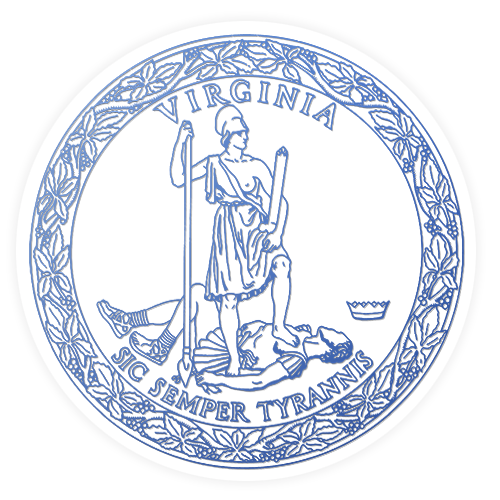
RICHMOND—Governor Ralph Northam today issued the new Commonwealth of Virginia Emergency Operations Plan (COVEOP), which lays out improvements to policies and plans for responding to hurricanes or other major natural disasters in Virginia. With the peak of Atlantic hurricane season under way and Hurricane Dorian beginning to impact Florida and neighboring states, the issuance of these comprehensive response and recovery protocols reminds state agencies, local and tribal governments, and Virginia residents of the importance of preparedness. The Virginia Department of Emergency Management (VDEM) maintains the COVEOP and presents the plan to the Governor for adoption every four years, at a minimum. The Governor also signed two executive orders to better coordinate emergency response among state agencies and ensure all of Virginia’s state government resources are mobilized to prepare for, respond to, and recover from hurricanes and other emergencies.
The COVEOP is an all-hazards plan that outlines the responsibilities of every state agency to directly or indirectly support emergency operations in the Commonwealth. The COVEOP empowers state emergency management officials with oversight of statewide response, and marshals the resources of other state agencies such as the departments of transportation, agriculture, health, and social services, the Virginia National Guard, Virginia State Police, and others to provide personnel and support services to emergency operations at the state level and to support localities directly impacted by a disaster.
The Governor signed Executive Order Forty-Two which, adopts the COVEOP and streamlines the process by which a state of emergency is declared and delegates authority to state agencies to waive certain registration, licensing, and permit requirements to speed disaster recovery.
“Keeping Virginia families, businesses, and communities safe in the event of a hurricane or extreme weather starts with having the plans and infrastructure in place to support emergency operations,” said Governor Northam. “Together with our state agencies, we are updating the Commonwealth’s existing emergency management procedures and making the necessary investments to ensure our personnel and localities have the training and resources to navigate the response to and recovery from any type of disaster. I encourage all Virginians to follow suit and take steps now to make sure they are ready with an emergency plan and emergency supplies.”
Executive Order Forty-One clarifies emergency preparedness responsibilities for state agencies and institutes of higher education. It requires state agencies to: have contracts in place for preparedness and for performing their emergency response and recovery responsibilities; appoint a liaison officer to work with the Virginia Emergency Support Team; and designate public information officers to assist in the state joint information center with emergency communications when the state is under a declaration of emergency. It also directs each state agency to include emergency preparedness planning, training, and exercises as basic functions of its business and management practices.
“As a Commonwealth, we have a comprehensive plan in place to respond to severe weather or man-made threats,” said Secretary of Public Safety and Homeland Security Brian Moran. “We know hurricanes can disrupt Virginia communities with flash flooding, damaging winds, and tornadoes. Power interruptions, extreme heat, transportation networks, and communication system problems may result from severe weather. As we move forward with this updated emergency operations plan, I also urge Virginians to prepare and make a plan to address your family’s unique needs and circumstances.”
Virginians are encouraged to make preparations to sustain themselves during and after hurricanes or other extreme weather events. Atlantic hurricane season runs from June 1 through November 30, with its traditional peak period from mid-August to late October.
Preparing for a Hurricane or Severe Weather Threats
Have a family and business emergency plan that includes decisions on whether, how and where to evacuate, or how to safely shelter in place. If you live in coastal Virginia, learn your hurricane evacuation zone, review evacuation routes and the Commonwealth’s Hurricane Evacuation Guide at KnowYourZoneVA.org. Coastal Virginians can also call 2-1-1 to learn their evacuation zone if they do not have access to a computer or internet services. Residents not residing in a pre-identified evacuation zone should listen to evacuation orders from local and state emergency agencies to determine if and when to evacuate.
All Virginians, regardless of where you live or work, should review the Hurricane Preparedness Guide at VAemergency.gov/hurricanes. Planning resources are available at VAemergency.gov/make-a-plan.
Know your risk for inland or coastal flooding, and take steps to mitigate that risk. Hurricanes can produce significant statewide flooding, and just one inch of water in a home or business costs thousands of dollars in cleanup and repairs. Most property insurance policies do not cover flood losses including those damages that result from flash floods, dam breaks, storm surge, inland flooding, and river flooding.
Do not wait until you see the next storm coming to purchase a flood insurance policy—it takes 30 days for a flood insurance policy to become effective. Talk to your insurance agent, contact the National Flood Insurance Program (NFIP) call center at (888) 379-9531 for an agent referral, or visit Floodsmart.gov. To learn to how to prepare for and recover from a flood, visit VAemergency.gov/floods.
Gather the supplies you need to have on hand in order to be prepared for all emergencies. Depending on the severity of the disaster and your geographic location, it can take several days or weeks for government services and assistance to reach you and your family. Purchasing emergency supplies and building an emergency kit to sustain your family during and after a hurricane is critical. Visit VAemergency.gov/supply-kit to review the checklist of supplies for your family and pets and to build a family emergency communication plan.
Stay informed as a storm approaches by following local media outlets, your National Weather Service field office, and VDEM on Facebook and Twitter.
# # #